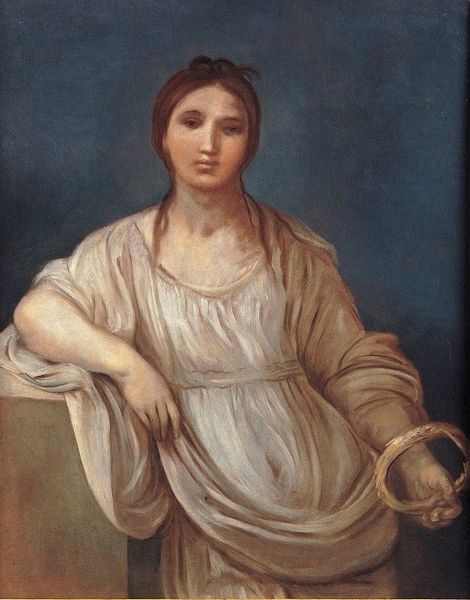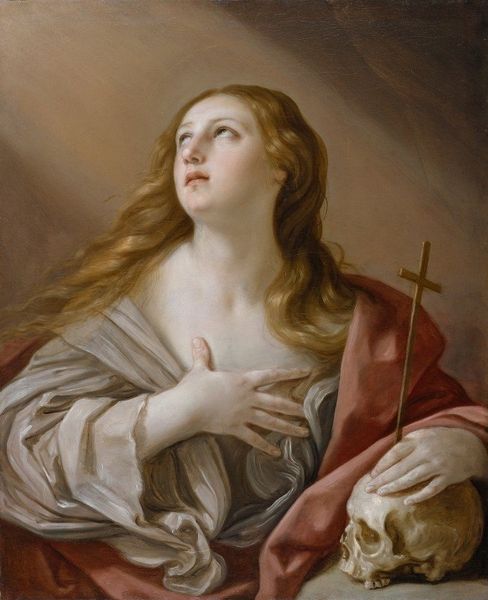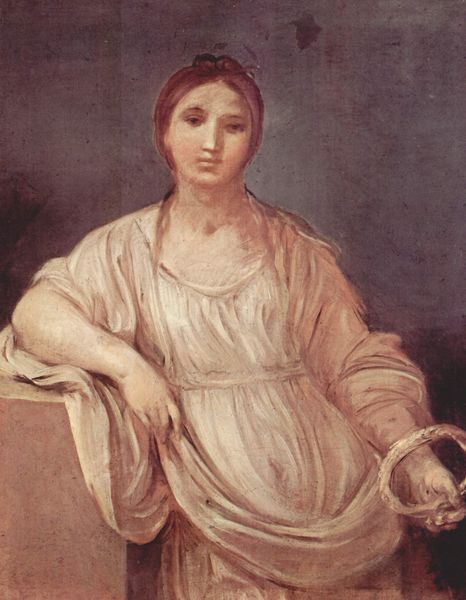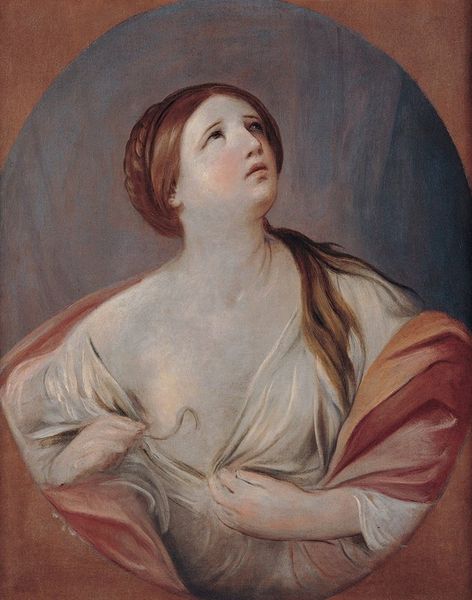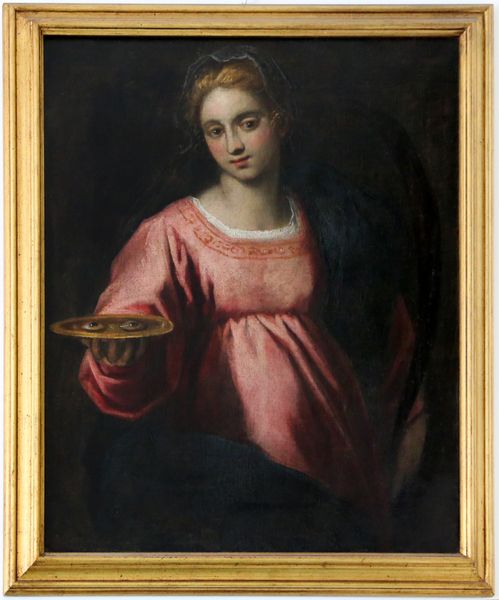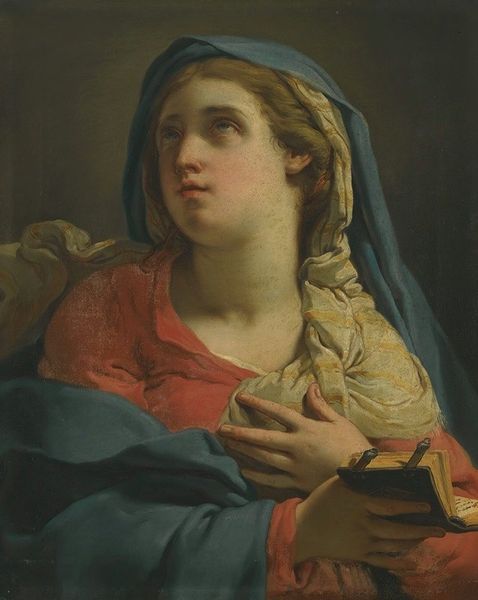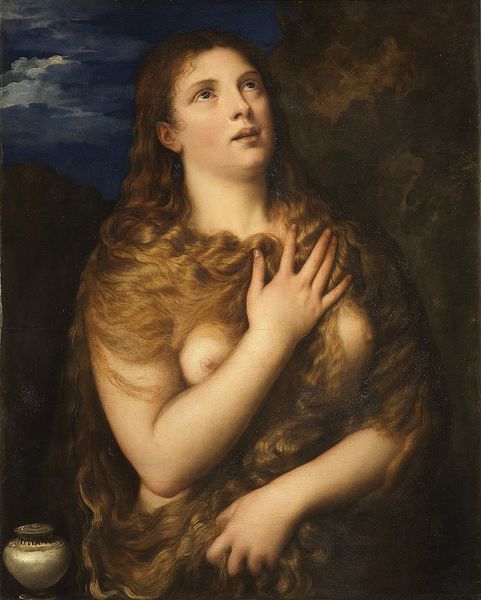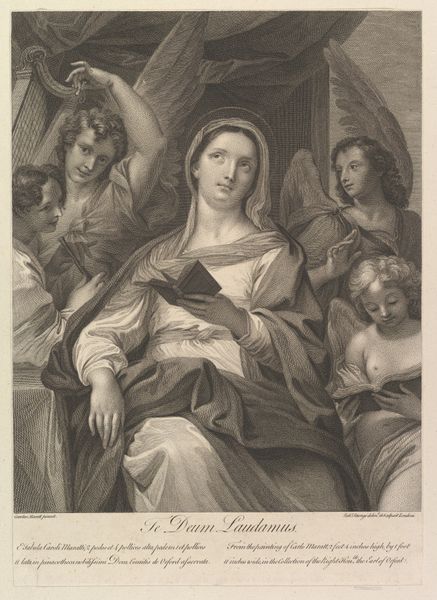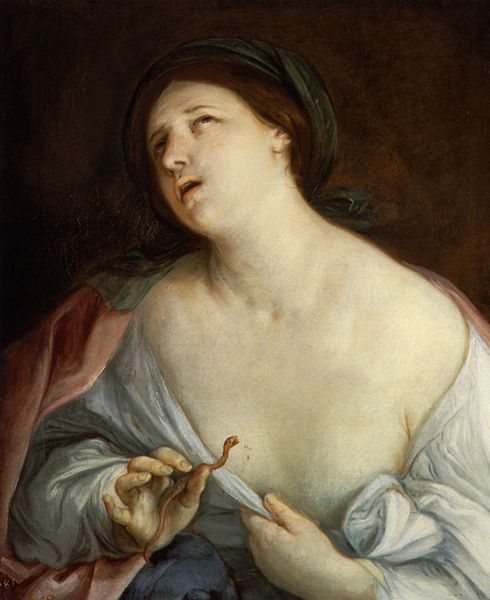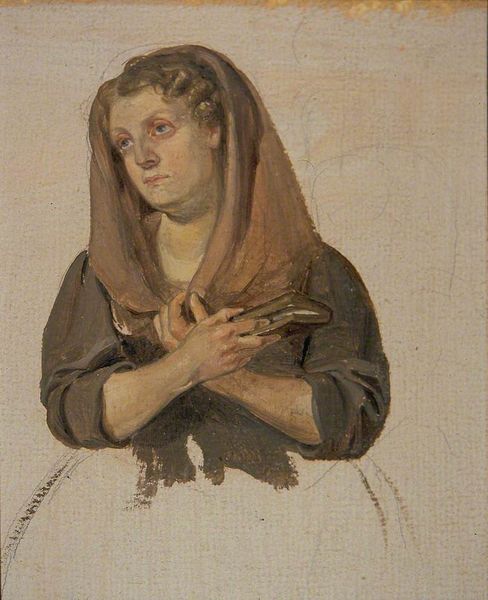
painting, oil-paint
#
portrait
#
baroque
#
painting
#
oil-paint
#
figuration
#
chiaroscuro
#
history-painting
Copyright: Public Domain: Artvee
Curator: What a poignant image. Guido Reni painted "Magdalene With The Jar Of Ointment" sometime between 1640 and 1642, during the height of the Baroque period. Editor: Yes, that period practically radiates drama. But this, surprisingly, feels very contained. It’s almost as if the painting itself is holding its breath. The limited color palette and soft edges contribute to a solemn, subdued tone. Curator: It is fascinating how Reni utilizes the Baroque chiaroscuro, that play of light and dark, not for grand theatrics but for introspective examination. We have to remember the context: images of Mary Magdalene served a crucial function in Counter-Reformation art, offering viewers a potent example of repentance and redemption. Editor: Precisely! The jar is really drawing me in here. The shape, round and full, is beautifully echoed in the soft curves of the Magdalene's face. Her pale hands, how she gently cradles it – all adds to a sense of delicate contemplation, and I'd argue that the overall effect of it adds grace, like a melancholic song. Curator: Considering Reni's popularity among aristocratic patrons, particularly within the papal states, images such as these were undoubtedly intended to shape ideals of feminine piety. She embodies beauty, but it’s a beauty tempered with humility and remorse. It mirrors, too, the political aim of promoting a message that even a sinner can ascend to great things through genuine devotion and acceptance into a new role in the ecclesiastical order. Editor: Her gaze avoids our own. Instead, her eyes are focused towards something beyond the physical space of the painting. As a study in form, her modest appearance draws attention back into herself in that solitary moment, as we gaze upon a person who seems so absorbed with the burden or blessing she carries, at that same moment. Curator: Looking at Reni’s Magdalene, I find myself pondering how artists leverage archetypes to influence viewers across societal strata. This wasn’t merely art for art’s sake; it served very specific cultural work. Editor: Indeed, but it transcends mere didacticism by offering a beautiful study of light and feeling.
Comments
No comments
Be the first to comment and join the conversation on the ultimate creative platform.
